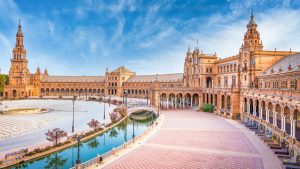Canada employment is gradually recovering to pre-pandemic levels, according to a recent Labour Force Survey.
In the latest study done by Statistics Canada, the country purportedly recovered 90,000 jobs in the month of August alone. These gains, along with the steady rise of Canada’s employment over the past year, have brought the country just 156,000 employees short of February 2020 levels. This is the closest Canada’s employment levels have reached pre-pandemic numbers.
Public Health Measures Give Way to Canada Employment
Statistic Canada’s Labour Force Survey reflected market conditions from August 15 to 21. At this point, most provinces in Canada had already eased public health restrictions to their final stages, as vaccination rollout continues. Around this time, Canada had also reopened their borders to fully-vaccinated tourists from the US, allowing the tourism industry to serve US tourists since March 2020.
Canada Employment Rises in Various Industries
Employment increased primarily in service industries, particularly in accommodation and food service. These rising levels, accompanied by significant gains in information, culture, and recreation, could be tied to the reopening borders and easing health restrictions. With more and more people safely able to go out, these industries will likely continue on the rise.
Employment was also on the rise in the provinces of Ontario, Alberta, Saskatchewan and Nova Scotia. Other provinces and territories saw little to no change.
As Canada employment continues on an upward trend, unemployment dropped to its lowest rate since the pandemic began.
Canada Employment on the Rise for Recent Immigrants, Filipino-Canadians
Recent immigrants who landed in Canada within the past five years continue to see a rise in employment. According to Statistics Canada, employment for recent immigrants is now more than six percentage points higher than August 2019. This is likely due to the reduced number of new immigrants admitted in 2020 due to the pandemic.
Among Canada’s visible minorities, the employment rate rose among Filipino-Canadians to about 78 percent, 5 points higher than before.
If you’re interested in a post-pandemic future in Canada, and would like to learn more about the various immigration pathways to permanent residency, feel free register for one of our private online discussions. Register to an orientation for free here.
Like and follow our Facebook page or join our LinkedIn community to get the latest updates on immigration news.


